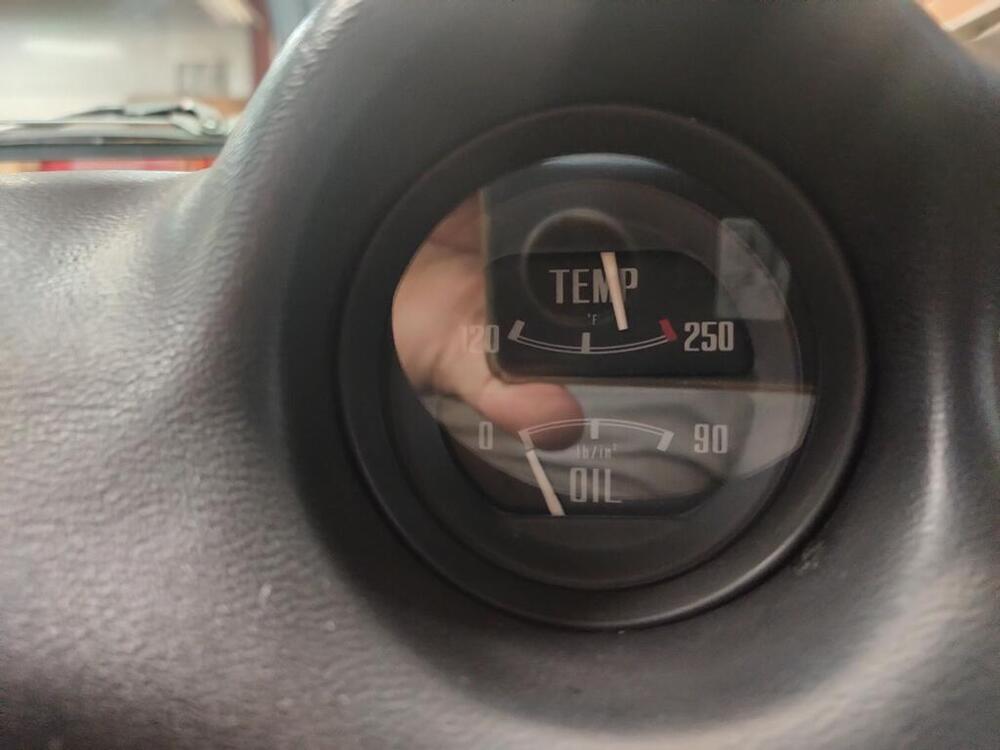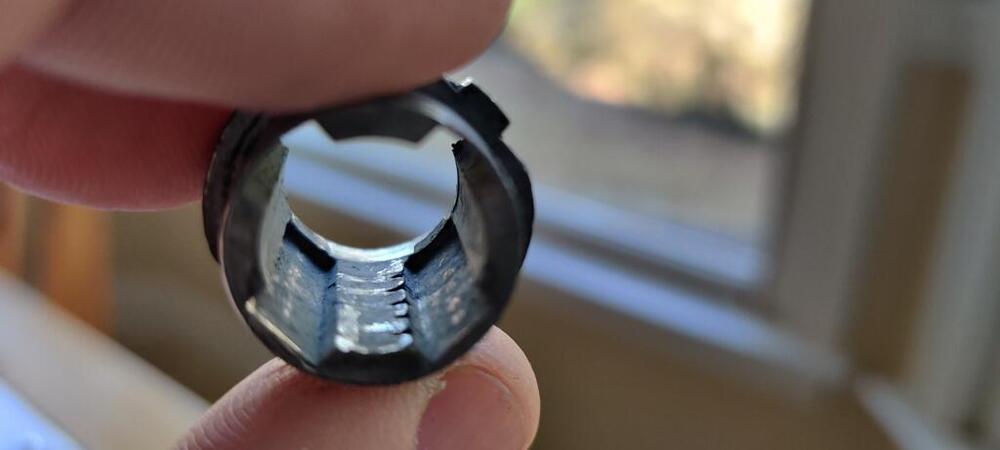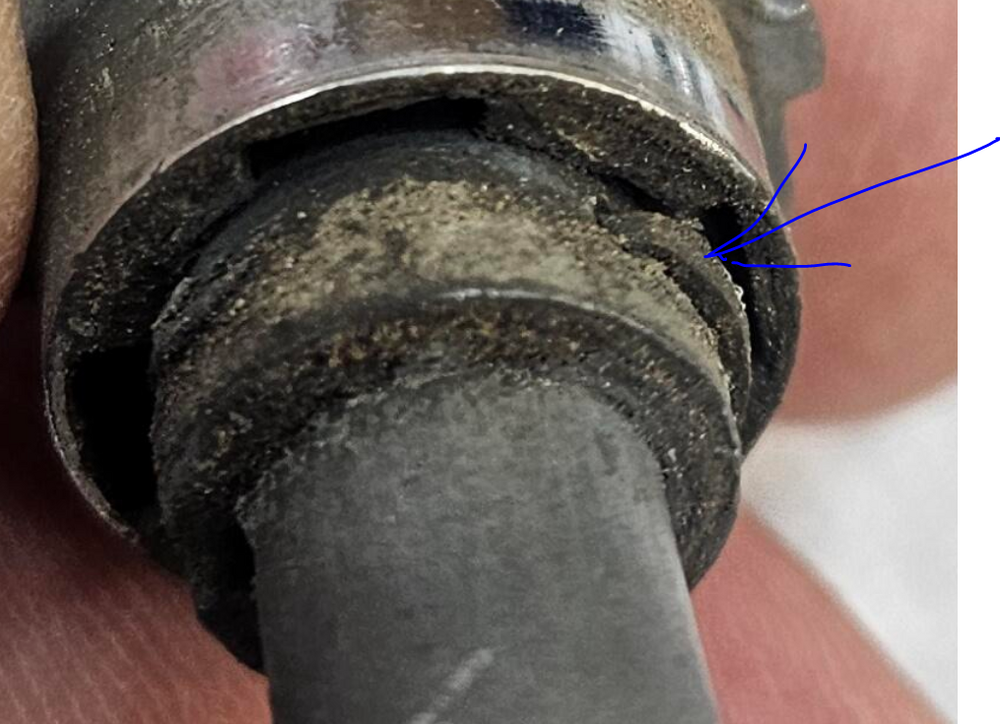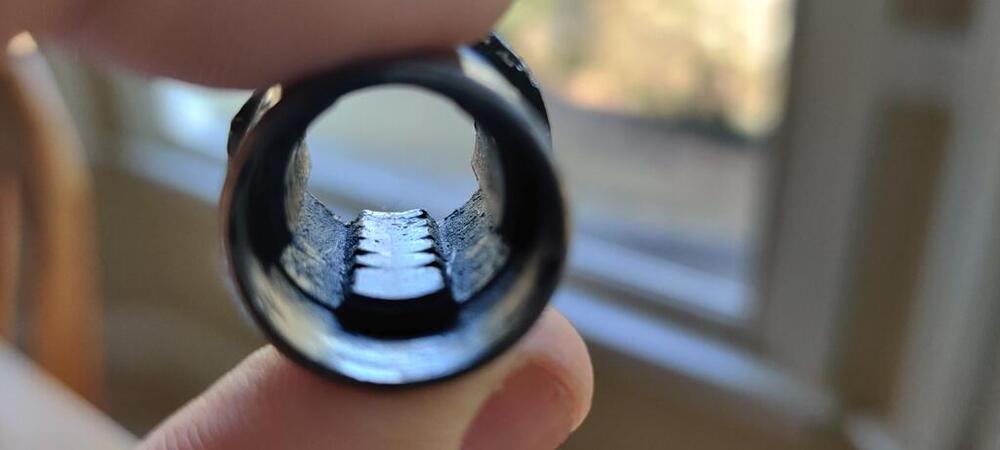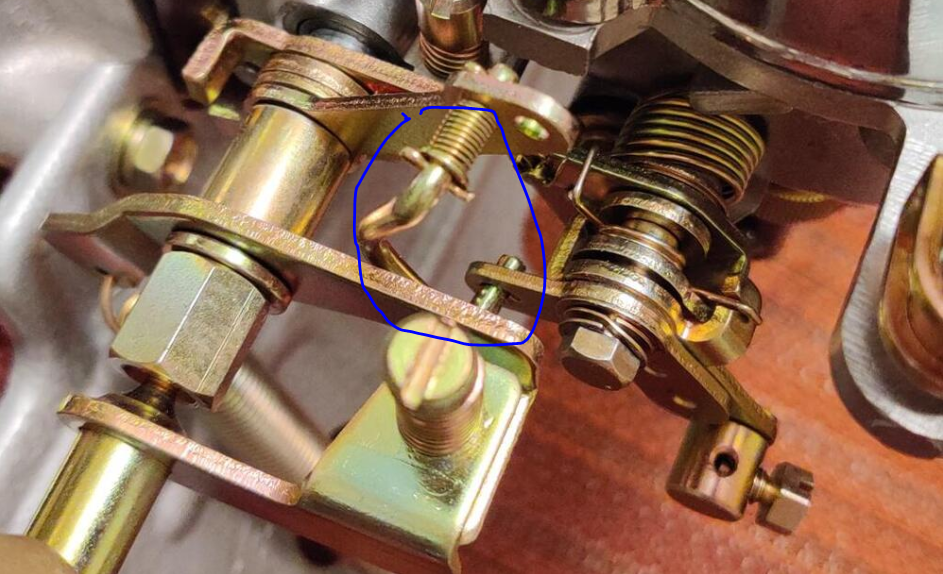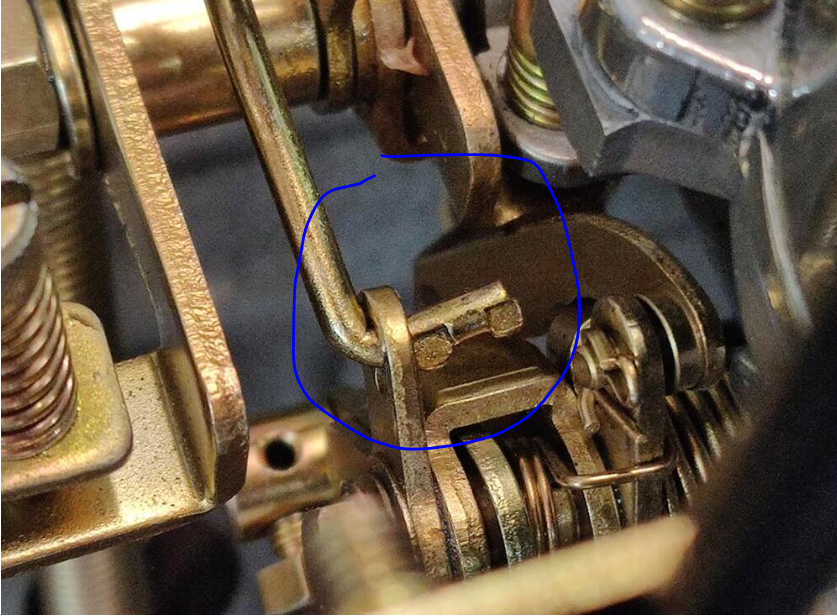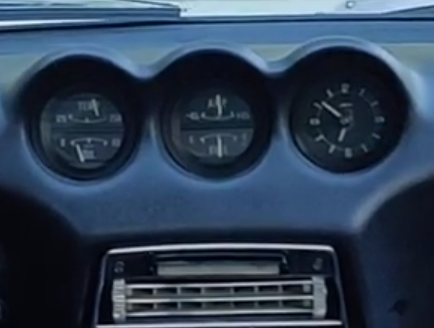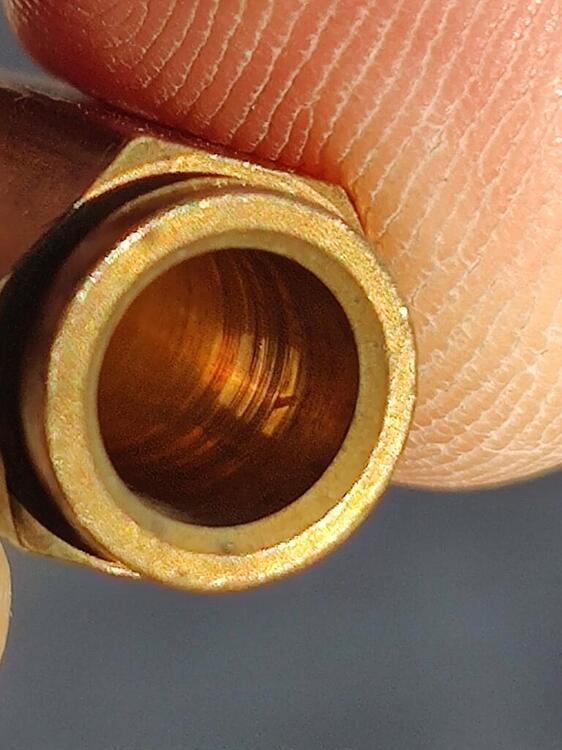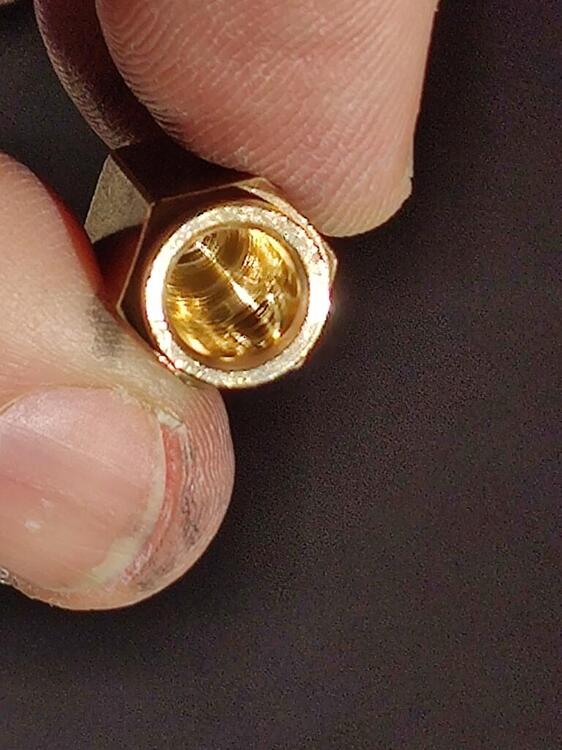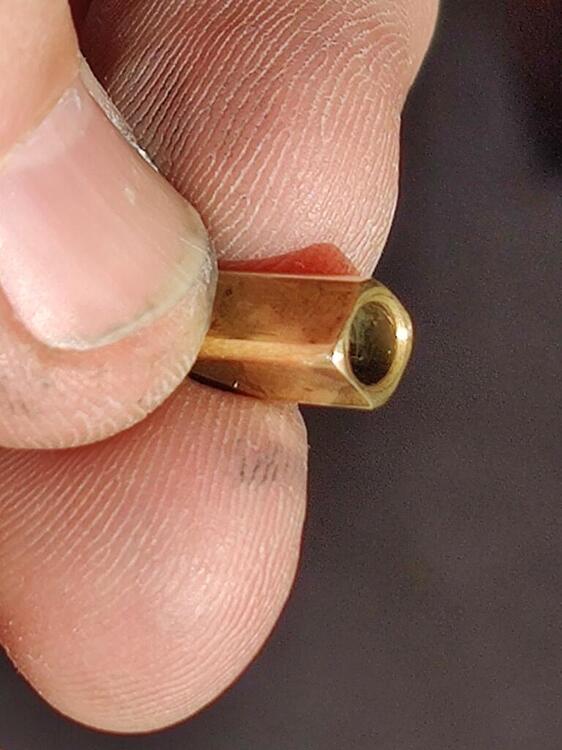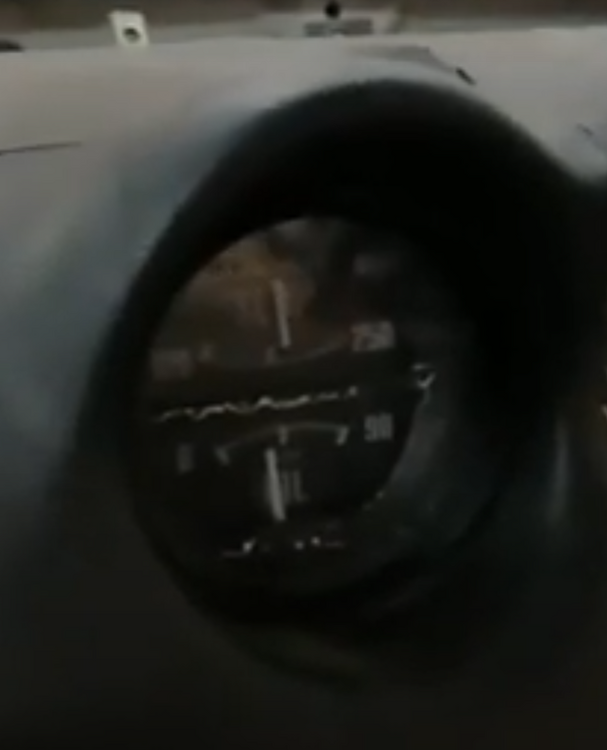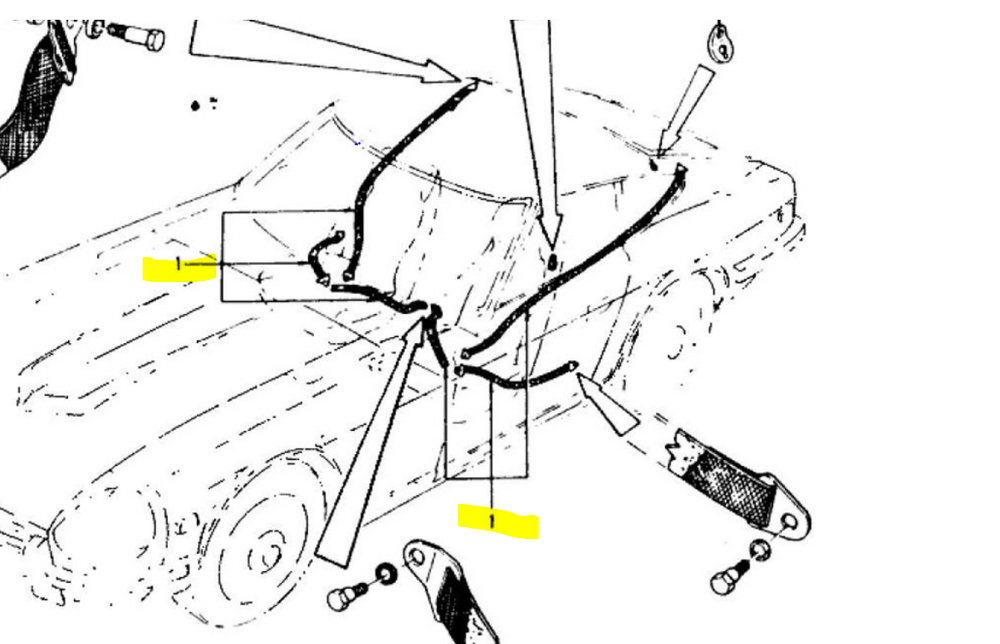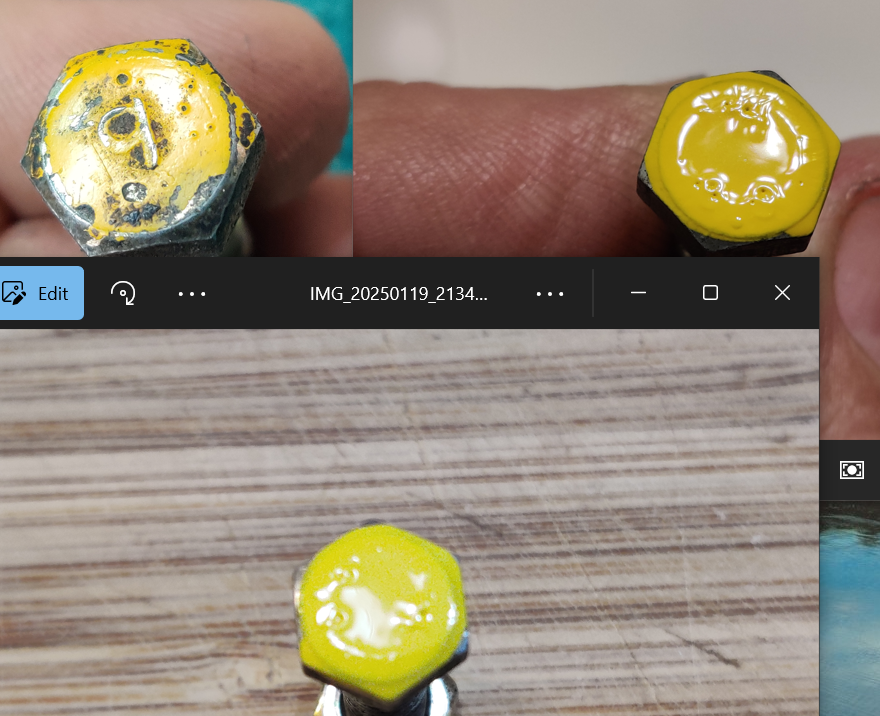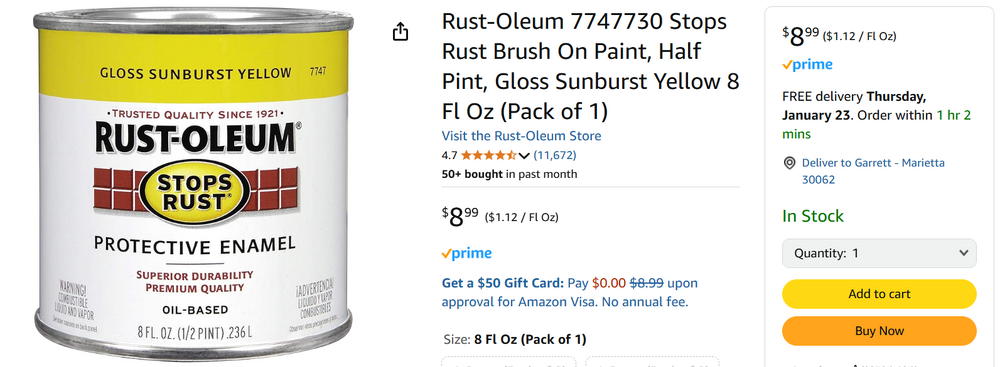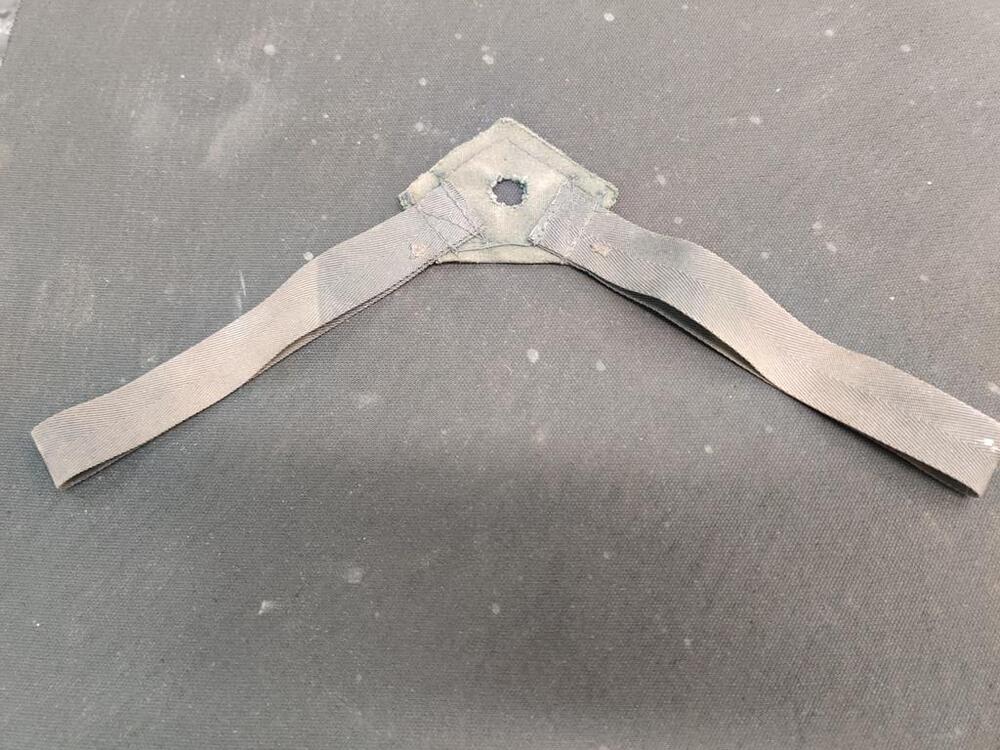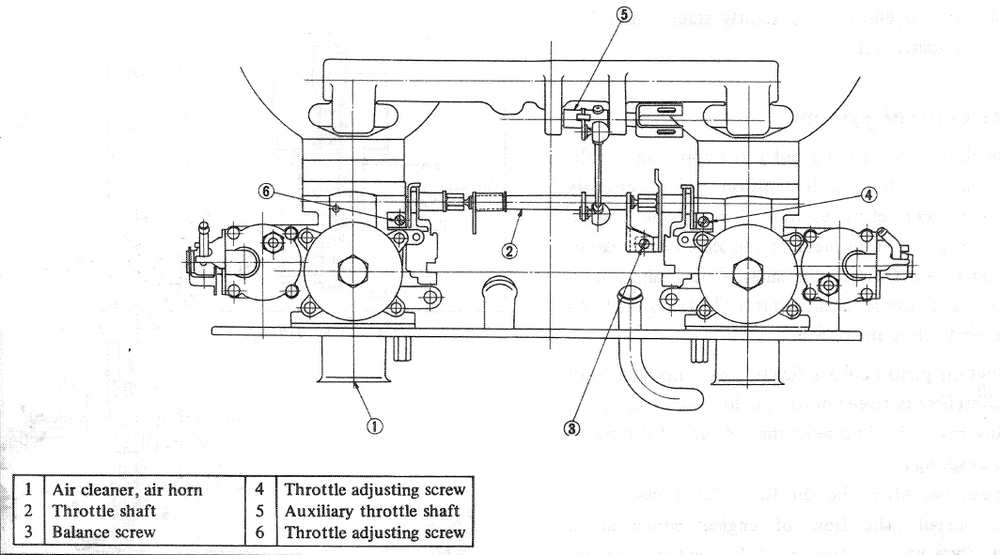Everything posted by inline6
-
Needle Is Too High On Temp Gauge
I do not know what my oil pressure is. I have not hooked up a mechanical gauge. Today, I noticed that when I set the key to the on position, both the temp gauge and the oil gauge needles move from their at rest positions. I never noticed that before. The temp gauge needles moves from pointing directly at the 2 in 120 to just a tad bit closer to the 0 in 120 (my laser gun indicated 70 degrees at the temp switch). And the oil pressure gauge needle moved from below 0 to pretty much right at 0. When I start the car, the oil pressure as indicated on the gauge goes up to almost max (90). When idling at a stop light, it is barely off of 0. I messed with the bi-metallic strip in the temp gauge today. I was able to get only slight improvement. Feels wrong to attempt to mess with it more. I think the bi-metallic strip would have to be drastically messed with to get the gauge to read correctly. I drove the car around for a few minutes to get the engine up to normal temp. I shut it off and took this pic after quickly returning the key to the on position. Temp needle is a bit lower than it what it was before messing with the bi-metallic strip - oil reads at 0 (it reads below zero with key off). My laser temp gun aimed at the sender switch showed about 146 degrees fahrenheit with the temp needle in this position in the gauge. I'd like to set up some bench testing. I'd like to be able to wire in a temp sender and apply heat to it, while at the same time measuring the resistance in the temp switch and the temperature of the heat switch... and viewing the position of the needle on the gauge. Would you be able to help me figure out how to wire that up @SteveJ? It would be nice if I could get the needle to show 120 when the temp switch is at 120, and to get the needle on the gauge to show 250 when the temp switch is at 250.
-
Needle Is Too High On Temp Gauge
Is it possible that heating and cooling of the bi-metallic strip over the years... thousands of times could cause it to harden, can change it's original action? I also find myself wondering why the same gauge only read a little bit higher than the mark in the middle before the restoration, and now is so much higher. I can rule out the sender, I believe. I used the original one, and two additional ones with no real change to the high position of the needle now.
-
Needle Is Too High On Temp Gauge
I got back to this today. I took my gauge out and the cover off. I found that my gauge does not have a screw. I should have taken some pictures, but I did not. After just now reading the above post you shared @Captain Obvious, I believe my gauge my be uncompensated? I only recall seeing the one U shaped bi-metallic strip with the white wire coiled around only one leg of it. It seems like to try to adjust it, I will need to bend part of the U?
-
1971 HLS30-14938 "Lily" build
I didn't have the correct key, but got mine apart without much difficulty. The hatch lock clocks in two positions, one 90 degrees from the other. You have to align the wafers with a channel in the sleeve. Here are two photos showing the inside of the sleeve, one taken, and then the sleeve rotated around 180 degrees and another taken. Note the channels: The two channels in the first pic have "walls" at the far end. The other two channels do not - they are open channels from front to back. With the correct key inserted, the tumblers all retract, and pushing the large wafer in is all that is needed. Without the correct key, you may have to push the larger wafer down, and then insert a thin object like a hard wire that has been flattened to push all the wafers into the cylinder, so they will clear the "wall". Or, use it to push the wafers into the cylinder while you rotate the cylinder in the sleeve until the wafers fall into one of the channels without the wall. Then slide the cylinder out. The good news is that after you replace the wafers with the correct ones for a key you have, assembly will be much easier!
-
1971 HLS30-14938 "Lily" build
You push this special wafer in and slide the sleeve off the back of the cylinder. Do you have the original key for that lock? If so insert it into the lock and push the special wafer in and slide the sleeve off the back of the cylinder. If pushing this special wafer in isn't enough, then you may need to wiggle/twist the sleeve left and right a bit to free it up from the wafers in the tumbler (which could be snagging the inside surface of the sleeve a bit). I remember mine being a bit finicky. The inside of your sleeve may look like this: The wafers in the tumbler will grab... (hang) on the wear grooves a bit. So, you push in the special wafer, which when not pressed in sticks out far enough to keep the sleeve from sliding off the back of the tumbler. And rotate the sleeve left and right to get the wafers to align with the slot in the inside of the sleeve (and not hang on the wear grooves)
-
SU Carb Choke Cable Adjustment
I suggest verifying that the engine is actually heating up beyond normal temps by checking it with a laser temp gun. After a complete restoration of my car, my temp gauge is reading higher than yours, but the temps at various locations on the head and thermostat housing are 175 to 195. I plan to remove the gauge and adjust it's reading by changing the position of a certain "adjustment" screw inside the gauge.
-
Restoration of BringaTrailer 240z - HLS30-35883
I started the car from dead cold a couple of days ago - this was after using the Uni-Syn to measure flow through each carb while the choke was in operation. I am very happy with how car starts now with the choke. I have also eliminated my sticking nozzles by bending the "Connecting Plate A". This is the flat bar part of the linkage that attaches to the bottom of the nozzle. Slight bends to it removed sideways force being applied to the nozzles. I had to do this for both carburetors. And, by setting the throttle plates firstly, to open to the gap specified in the factory workshop manual, and secondly, to achieve the same flow rate in each carburetor as indicated by the Uni-Syn flow measurement tool, I believe I have set the "starter interlock opening" on both carburetors very accurately, and I have achieved a well functioning "starting mechanism". The first step is to get the gap between the bottom edge of the throttle plate and the carburetor bore (as measured by a piece of ductile wire which I hammered to the right thickness and then used as a feeler gauge) to the .0232" to .0271" which is specified in the factory workshop manual. The second step is to start the car and set the "choke" lever to a spot where the engine is running at a fast idle speed (with the starter interlock acting on the throttle plates in the carburetors), and adjusting the "bent" connecting rod. This rod is circled in blue here: By bending it either more or less at the kink, you adjust its length, which changes the amount that this starter interlock linkage opens the throttle plates via the operating arm to which it is attached. When I was working on resolving my sticking nozzles a week or so ago, I managed to break the connecting rod on the front carburetor. I have since figured out what happened. When the screw holding Connecting Plate A to the bottom of the nozzle is removed, the starter interlock linkage (which is spring loaded) will forcibly move itself to a position where the bottom of this connector rod (blue circle in this pic) can shift laterally. In this picture, the rod on the rear carburetor has indeed shifted. It needs to be shifted to the left, so that the arm is located on the rod between the two pinched spots. The two pinched parts of the rod can align with the "key hole slot" in the linkage arm. When they do that, then the rod can shift out of its correct position as seen above. I did not notice this the other day, and when I couldn't bring the linkage back down to attach Connecting Rod A back to the nozzle, I just applied more force. The bottom of the rod had one of the pinched parts in the "key hole" on the attached linkage arm, preventing rotation at this joint. When I applied more force, this end of the rod twisted and broke. So, that is something to watch out for if you decide to work on your sticking nozzles!
-
Youtube entertainment video - there's a Z
I thread a transmission bolt into one of the bell housing bolt holes in the block, and one in one of the pressure plate holes in the flywheel, and then run some coat hanger or similar gauge wire around from one to the other and back again. About 4 loops. Flywheel is going nowhere.
-
Restoration of BringaTrailer 240z - HLS30-35883
Snagged this from a driving video I shot a couple of days ago. I have just stopped from pulling into my driveway. Temp gauge reading is actually even higher than I was saying - looks like the needle is cutting through the P in TEMP. Thanks @Captain Obvious for the pictures and comments about adjusting. It is a bit of a pain to get the gauge out at this point, but it is on my short list.
-
Poor fit of OEM air filter
Nope. I can't figure out what the issue is. Bad batch of OEM filters which are too thick? Something wrong with my air cleaner housing? I don't know.
-
Restoration of BringaTrailer 240z - HLS30-35883
Regarding the fuse cover, mine was slightly melted. I found one on Ebay a while back that was decent. Do not use any kind of thinner on them to clean them up. The white lettering on them is painted on and will rub away easily. I am pretty sure that the place in Marietta is the same company. When I contacted them, they responded from CA. They said that during Co-vid, the had to shut down the GA location, but that they were the same people. It was expensive.
-
Restoration of BringaTrailer 240z - HLS30-35883
The replacement connecting rod for the carburetor showed up in the mail today from ZTherapy. Thanks @Patcon for suggesting I contact them. Unfortunately, the replacement needles and seats did not show up in the mail today. So, I found myself removing the rear carburetor needle and seat... just to have little look see at it for issues. Well, one thing led to another, and I found myself on Youtube watching a video someone made about their needle and seat not working properly and causing fuel to gush everywhere. That person used a Q tip in a drill and some metal polish to polish the inside barrel of the seat. I decided to have a close look at mine. I wasn't able to take a good picture, but you can kind of see from the above one that the inside of the seat bore where the needle sits is not exactly smooth. So, I grabbed a small section of 1500 grit sandpaper and rolled it around a drill bit which I inserted into this bore. Using the drill, I smoothed out the ridges on the inside of the seat. Then I used a Q tip and some metal polish and a drill to polish the inside of the barrel. I then sanded the corners of the needle with some 2500 grit sand paper and polished the corners of it as well with the Q tip and metal polish: I After cleaning them, I put the needle and seat back together in the carburetor. Because I had to take the linkage apart to install the new connector rod, I synchronized the carburetors again. Here is something interesting: While I did the standard balancing procedure which included setting each carburetor's set screw so that each carburetor had the same flow at idle, and then screwing in the auxiliary shaft screw (to activate the linkage against both carburetors) and setting the balance screw to have the same flow during throttle application, I also did something similar for the choke. This is not something I saw in the factory workshop manual. For proper choke function, the factory workshop manual provides instruction to set a specified gap between the throttle plate and the body of the carburetor when the choke lever is pulled. This is to be done for each carburetor. After this is done, in theory, when you pull the choke lever, the choke mechanism will open the throttle plates on the front and the rear carburetor the same amount. I did as instructed in the factory workshop manual. However, I then started the car with the choke lever slightly activated. This raised the speed of the engine above normal idle speed. And then, I checked the flow of air through each carburetor using the Uni-Syn. Well, the flow was not the same. Similar to the procedure to balance the front and rear carbs when the linkage is activated, I used the Uni-syn flow meter to set the flow between the two carburetors to the same amount with the choke lever in operation (slightly). To adjust flow I had to shorten/lengthen the connecting rod for the choke. After completing this adjustment, when I pull my choke cables to start the carburetors, both throttle plates are opened to a position where both carburetors are flowing the same! I never was able to get the chokes working well on my track Z (when it had SU's), but I think this will be the ticket to getting the chokes to operate well on this car. I will be able to test that tomorrow when the engine is cold. I did take the the car for brief drive after messing with the needle and seat. So far, so good! I hope I have solved the issue with the rear carburetor puking fuel.
-
Restoration of BringaTrailer 240z - HLS30-35883
This is the place: Decorative Metal Coatings 2613 Temple Heights Dr. Ste. C Oceanside, CA 92056 Tel: (760) 746-3378 Fax: (760) 940-8781 Email: Accounting@DecoMetalFinishing.com Those plates are part of the ash tray parts. The plates seems to be something you can grab onto to lift the front of the ash tray out of the console. I had two sets of ash tray parts done.
-
Needle Is Too High On Temp Gauge
I found information pertaining to this issue on this site and on Zhome.com. However, rather than bringing back a thread last contributed to in 2013, I will start a new one and hope I can fix the problem I am having. The Needle on my temperature gauge is definitely going to high. I know however, the engine is not overheating because I have checked it with a laser temperature gun. Here is the info I have so far regarding the problem. When I first bought the car, I got the engine running for a brief amount of time before taking the engine out for rebuilding. I ran it up to temp in my garage (car was inoperative) and noted that the needle on the temp gauge was a bit high. Here is a slightly blurry screenshot from a video I took at the time. The engine was fully warmed up: Fast forward about six and half years and with the car fully restored, the same temperature sender put the needle (same gauge) on the base of the last stroke of the "M" of TEMP. That is not all that far away from the red zone of the gauge - near the "250". So, I figured to fix this, I would just need to buy a new temperature sender. When I changed to the new one, an aftermarket unit, I saw essentially the same thing, but the needle goes to the left side of the "P". I read in one forum thread that buying an OEM temperature sender fixed the issue. That seemed pretty promising. So, I sourced an original "Sankei" sender from a seller on Ebay. I switched to that one... and again found the needle goes to the left side of the "P". As I have continued to look for information about solving this problem, I have come across this article on Zhome.com which was referenced in an old thread on this site: In the Zhome.com article, there is mention of "adjusting the voltage regulator". From the context in the write up, it seems this is a different voltage regulator than the one for the alternator. Instead, this seems to be something, perhaps inside the gauge itself. However, the author is working with a 280ZX, so I am uncertain of the applicability of the information to my 1971 gauge. I did consult with @SteveJ back in November about using a "pot" like this person described in their post in the first of the mentioned threads above. I purchased this one per his recommendation: https://www.mouser.com/ProductDetail/BI-Technologies-TT-Electronics/93PR50LF?qs=UjOdgN%2FjCTVtZlza%2Bf%2Fo7g%3D%3D So, that is what I have so far. My plan is to check the three temperature senders that I have for differences if any, compare them to the specs provided in the Zhome article, to learn anything relevant about the voltage regulator and try to adjust it if possible, or to wire in the "pot" to ultimately resolve this issue if that is what it comes to.
-
What year 240z had this seat belt strap - holder?
Is that a BMW buckle receiver?
-
What year 240z had this seat belt strap - holder?
Even though the description says "holder", that appears to be for the belts. I don't see the part I am asking about in the car parts manual info.
-
Restoration of BringaTrailer 240z - HLS30-35883
I bought some of this yellow paint to see if it might be close to the stuff that was used in the original assembly line. It was inexpensive, so I thought I would have a look. Lighting is a big factor in the look from a picture. But here is an original fastener with paint that is in pretty good condition, along with a fastener that I dipped into the new paint. My skin color is darker in the picture of the new paint, which tells me the lighting is darker. I also took a picture in another room (kitchen) with different lighting. It looks reasonably close in the pictures, but I think is a bit "lighter" than the original paint.
-
What year 240z had this seat belt strap - holder?
Is this original to early Z's - 1970-71, or only later years? To install it, you slip it under the center console, and run the forward most of the three back screws through the hole. The straps hang down on each side of the transmission tunnel. And you slip the inner most seat belts through the loops. In theory, it keeps the seat belt from falling down to the floor in between the seat and the tunnel.
-
Restoration of BringaTrailer 240z - HLS30-35883
Oh, while I was doing the test drive, the rear carburetor needle/seat/float failed again. This, after I was able to drive the car many times, and trouble free for about 100 miles. I was about a quarter mile from the house, and the engine started to fail to idle. I wasn't sure what the problem was, so I limped it home. When I opened the hood, I smelled gas, and saw that fuel was all over the place and dripping onto the header. Awesome. I decided to take a thin wire and reach down the float vent tube... to tap the float, which in theory, would unstick it. I tapped the float down and it bobbed back up again. I did this several times, and could hear the float contact the needle when it would bounce back up. Bounce, bounce, bounce, followed by tap, tap, tap. I turned the ignition key and several geysers of fuel came out the float vent. Awesome. I stopped there. I think I will replace the needle and seat next. There must be something wrong with it.
-
Restoration of BringaTrailer 240z - HLS30-35883
"sticky" throttle linkage has been a problem with two out of two 240z's I have owned. To go from no throttle to just a little it of throttle, there is noticeable resistance. I notice that as I try to apply a gentle amount of force, nothing moves. Then I apply more force and more force, until finally, the linkage "jumps" open and the car jumps forward. Driving the car to work the other morning for some show and tell, and getting into the midtown Atlanta area during the commute, this issue was extremely annoying. Yesterday, I worked on all parts of the linkage for the better part of 2 hours. Everything in the linkage has been examined and lubed. Adding grease to the auxiliary throttle shaft (5) helped a little. I disconnected all of the pieces in the linkage and checked each one for issues. Each piece in the system operates smoothly. With the gas pedal disconnected, and carburetor linkage return springs disconnected, I operated the connected parts of the linkage. So, the (5) aux shaft connected to the throttle shaft that slips into eyelet of the bracket on the fire wall, the rod that connects from that shaft to the bell crank, and the rod that goes from the bell crank to the gas pedal. The only thing I can detect as a potential problem in that assembly, as far as resistance to movement goes, is that the rod that goes through the rubber bellows may be rubbing against the inside of the bellows a bit. It is hard to tell with the other end of that rod disconnected from the gas pedal. But I felt some kind of rubbing or vibration coming through the bell crank when operating the linkage. I removed the gas pedal and its mounting bracket (which is made of plastic) and put grease on the pivot points. With that reassembled, I tested movement of the gas pedal alone, and it operated smoothly. However, when I reconnected the gas pedal to the rest of the linkage, and put the carburetor linkage return springs back in action, unbelievably, I got a squeak at the gas pedal pivot (which I confirmed was unrelated to the spring that is there. That is what I chased for a good part of the time I was working on this "little" issue. After I got that quieted down, I decided to do a brief test drive around the neighborhood to see how much better it was. I was able to control the throttle application a little better, but it's not good enough for me. Anyone else have luck addressing this? I have an old recollection from when I dealt with this issue on my other 240z many years ago. I believe I ended up changing the length of the adjustable connecting rod and that was helpful. In concept, that would alter some of the operating angles of the system.
-
Seeking proper choke function with the 4 screw type
@240dkw I sent an email to Ztherapy last night and they responded this morning. Hold off on looking for now - don't want to trouble you. They have one for a good price. Thank you for the response.
-
Seeking proper choke function with the 4 screw type
Awesome. The one for the front carb is bent different than for the rear carb. Let me know what you find whenever you get a chance.
-
Seeking proper choke function with the 4 screw type
Worth a shot. Email sent.
-
Seeking proper choke function with the 4 screw type
Well, I was. I have both nozzles moving up and down without sticking now, but I managed to break the bent connecting rod (4) on the front carb. Somehow, with the screw not holding the (1) Connecting Plate A to the nozzle, the spring loaded mechanism for the choke jammed fully upwards, and I couldn't for the life of me figure out why I couldn't get it to pull down where it belonged. In a moment of frustration, I pulled on the linkage to bring it back down where it belongs, and sheared the connecting rod at the bottom, where there is a 90 degree bend. Anyone have a "parts" front carb, who could bare to part with (pun intended) the (4) connecting rod?
-
Seeking proper choke function with the 4 screw type
I measured my nozzle drop and got .370" for the back carburetor and .365" for the front. So, it seems I did a bit of exaggeration there! I tweaked the #1 bar a bit on the back carburetor and was able to achieve smooth up and down movement of the nozzle. I tested its movement repeatedly. That one is good! I am in the middle of doing the same thing to the bar on the front carburetor to get the front nozzle to stop sticking. Evidently, these bars have to be in quite a particular shape, or they allow a sideways force on the nozzle that can cause it to stick when it is extended out of the nozzle sleeve.




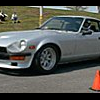
 Subscriber
Subscriber
